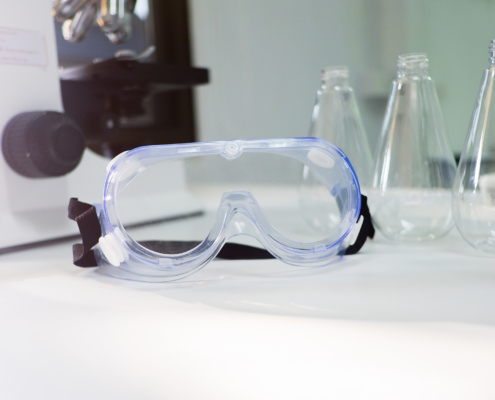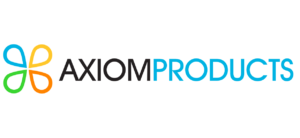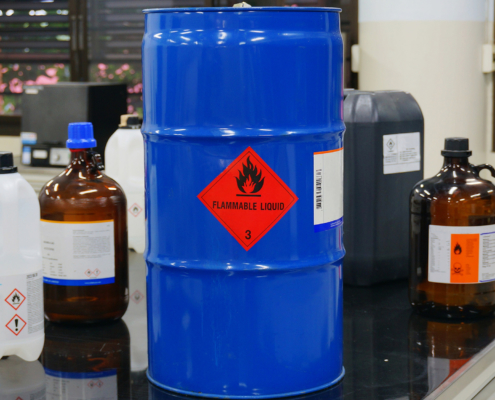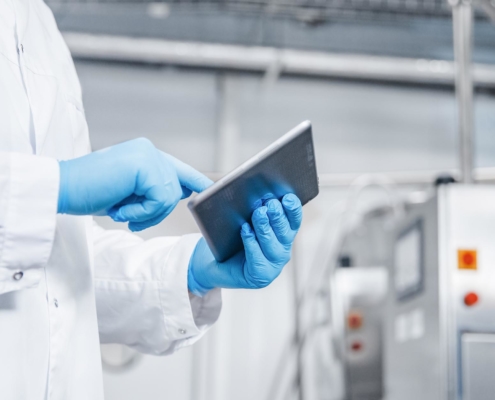
How To Properly Clean Chemicals Out of Plastic Containers
Personnel must properly clean chemical barrels, containers, and measurement devices to regulated standards to ensure maximum safety for all involved. Whether you’re reusing, recycling, or disposing of an empty chemical container, personnel must ensure it’s done correctly. That’s why it’s essential to know how to clean chemicals out of plastic and glass containers properly.
Why Is It Important To Properly Clean Chemicals Out of Plastic Containers?
Medical facilities, labs, pharmacies, and other healthcare providers use chemical-based and hazardous products stored in designated plastic or glass containers. Environmental laws strictly regulate how these empty chemical containers should be disposed of. However, it’s not enough to rinse them out or remove chemical smells from plastic containers.
The residue left in empty chemical containers can be dangerous if not disposed of properly. Using warm water and dish soap will not be enough. For example, if personnel don’t treat containers before disposal, chemicals could mix with groundwater and cause harm to humans and wildlife.
Preventing adverse outcomes starts with knowing how to manage chemicals carefully and making all efforts to reduce chemical waste production by you, your company, institution, or household. Reusing or recycling chemicals and containers should be prioritized if possible, followed by proper disposal if not—cleaning chemicals out of plastic containers is essential.
Jet Rinse Triple-Rinsing Nozzle
Did you know that you must triple rinse chemical containers before reusing, recycling, or disposing of them to remain EPA compliant? However, cleaning chemicals out of plastic containers can quickly become challenging and time-consuming when you have dozens or hundreds of chemical containers you need to rinse, especially if your facility deals with industrial chemical containers.
There are industrial, EPA-approved products that allow you to clean chemical residue from containers correctly. Triple-rinse nozzles are one of these products.
What To Do With Cleaned and Empty Chemical Containers
After you’ve correctly cleaned your chemical container, there are different procedures personnel must do before reusing, recycling, and disposing of empty containers. Some of these include storing and transporting chemical containers, label replacement, and other EPA regulations.
Here’s what you should do when reusing, recycling, or disposing of containers with chemicals previously stored inside.
Reuse
First, ensure the container is clear of any chemical residue and has had ample time to dry completely after washing properly. If containers are not cleaned of chemical residue correctly, it could cause an explosive chemical reaction.
After you’ve cleaned chemicals out of plastic containers, you can reuse them for many different purposes. You can reuse cleaned containers for water storage or spill residue disposal, but you shouldn’t use them for radioactive waste storage or disposal. Ensure the reused container is compatible with the chemicals or hazardous materials you are storing. All original container labels and markings must be removed and replaced with labels displaying the current container contents.
Recycle
Cleaning chemicals out of plastic and glass containers is required for recycling them. Follow your community’s or institution’s guidelines for recycling empty chemical containers. This will depend on the container’s previous chemical contents.
Before recycling household containers, ensure they are empty and dry, with no chemical residue, and have the labels and caps removed. Remove tags and mark the containers as open. Containers for volatile organic solvents can be air-dried in a ventilated area or under a chemical fume hood before recycling.
Do not throw empty chemical containers into standard recycling bins, as toxic residue can harm those who handle it at pick-up or waste disposal sites. It would help if you kept this in mind, especially at hospitals or medical facilities.
If you need equipment to clean empty chemical containers, Axiom Products is the supplier for you. Axiom Products offers the Jet Rinse Triple-Rinsing Nozzle, the industry’s best chemical jug rinser.
Dispose
Empty chemical containers must be cleaned three times with a compatible solvent before disposal, in accordance with EPA regulations and local or institutional guidelines. The containers should be allowed to dry in fresh air or under a chemical fume hood if inside.
After cleaning and drying, remove any labels or warnings, and write “empty” on the containers. Remove the seals and caps, placing the empty container in the proper disposal area.
Cleaning chemicals out of plastic containers requires personnel to clean all empty chemical containers and dispose of them properly, according to guidelines and regulations. These processes will prevent harmful residue from being dumped or disposed of improperly.
Choose Axiom Products for Chemical Cleaning Solutions
Axiom Products is your best choice for cleaning hazardous material from your containers. Our high-quality products obey EPA guidelines and other safety precautions. If you need to effectively rinse chemicals out of plastic barrels or clean chemicals out of plastic and glass containers, Axiom has you covered.
Axiom Products offers the Jet Rinse Triple-Rinsing Nozzle, the industry’s best chemical jug rinser. The triple-rinsing jet removes up to 99% of residue in under a minute, cleaning chemicals out of plastic and glass containers easily.
We also provide our specialty line of ACCUPOUR containers, cups, and scoops. They’re made of a durable, high-quality material designed to be used and cleaned over and over again, making them a cost-effective solution. ACCUPOUR measuring containers are molded with built-in measuring units, ensuring they won’t be rubbed away or fade over time. Axiom Products has everything if you need containers designed to hold chemicals or devices to clean them.






